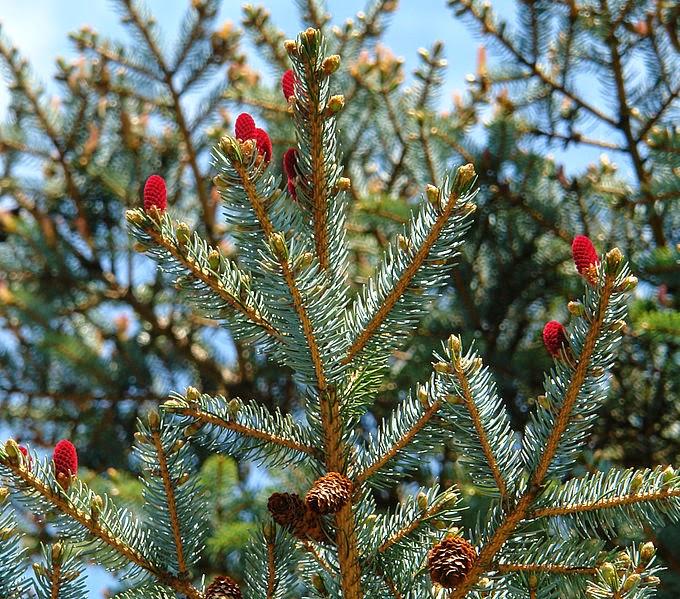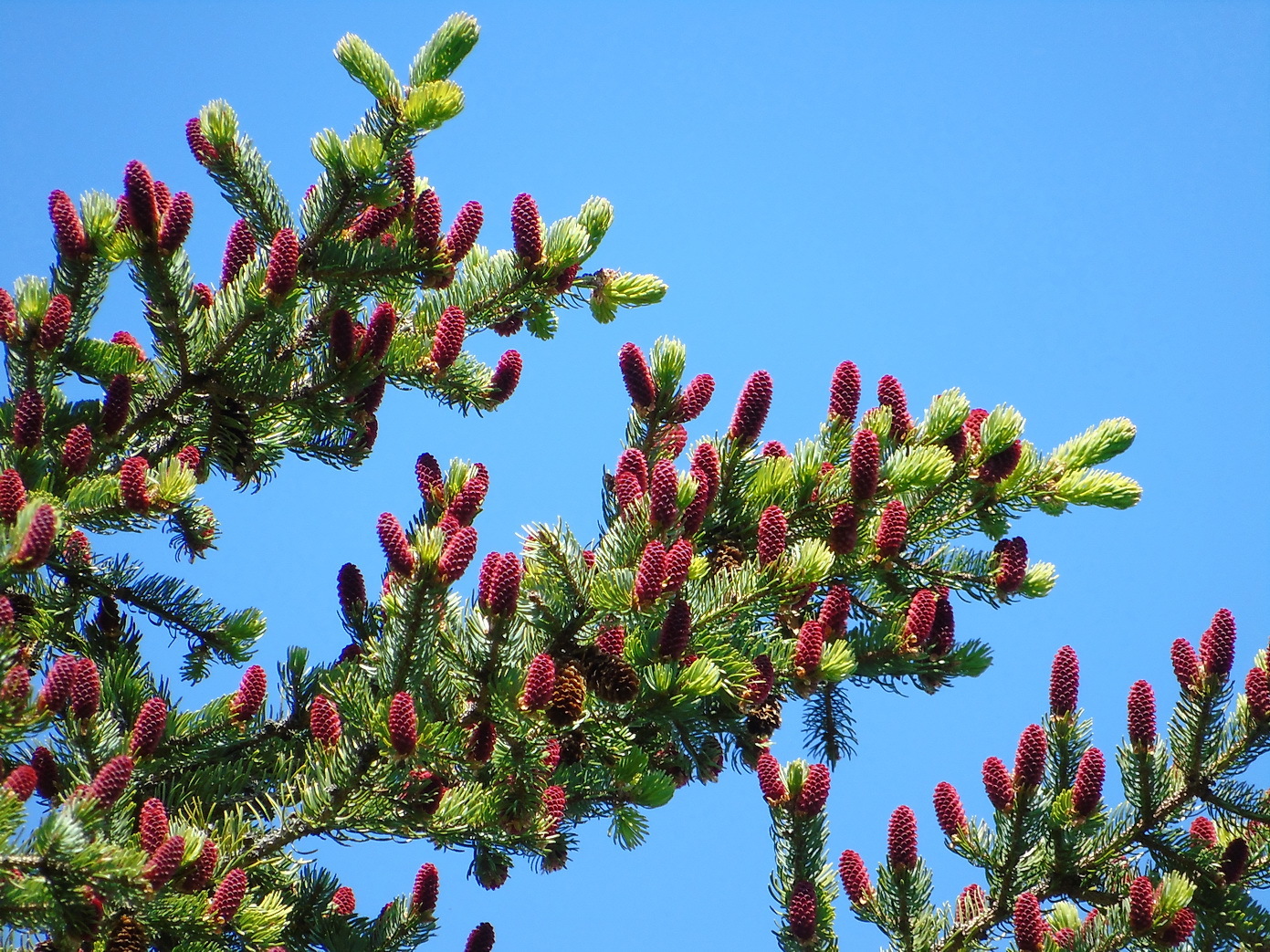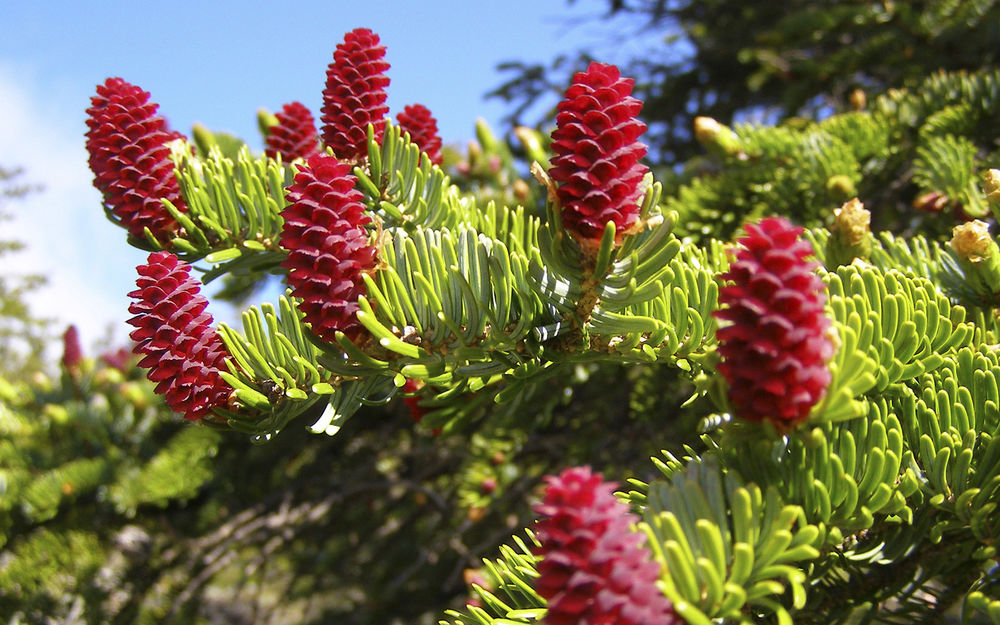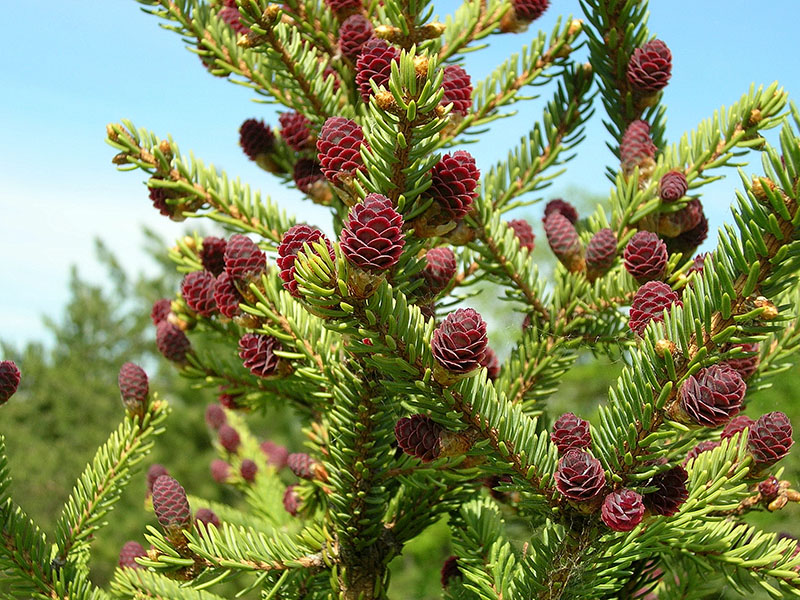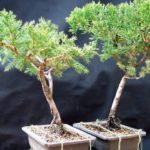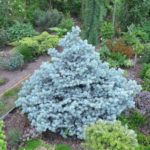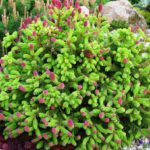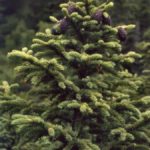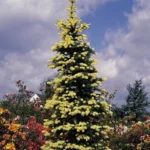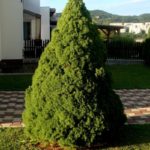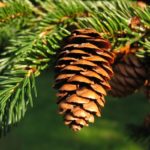Ayan spruce is a large evergreen plant that in natural conditions reaches 60 meters. When grown in parks, it usually does not exceed 35 meters. This crop comes from the mountains of Japan. However, during its existence it has become widespread in different countries of the world. For the cultivation of a crop to be successful, it requires proper care.
Description of the tree
In appearance, this type of spruce is similar to common or Sitka. It is a tall, slender tree that can reach impressive sizes.At a young age, the culture is characterized by slow growth, but subsequently develops moderately. The plant has a regular conical or pyramidal shape and whorled branching.
The culture has thin and stiff branches and dark gray bark. In young plants it is quite smooth. As the bark ages, it peels off in rounded sheets. The shoots are yellowish-green or brown in color.
The needles are flat and reach a length of 2 centimeters. The needles are arranged on the branches in a spiral. They are dark green above and bluish below. The needles can remain on trees for 10 years.
Ayan spruce is listed in the Red Book and is on the verge of extinction. Depending on distribution, the following subtypes of culture are distinguished:
- Picea jezoensis jezoensis – has become widespread throughout its entire range;
- Picea jezoensis hondoensis - grows exclusively in the highlands in the center of Honshu.
Distribution area
Ayan spruce has become widespread in the Far East and Japan. In Russia, the culture is found in Kamchatka, Sakhalin and the south of the Kuril Islands. It is also available on the western shore of the Sea of Okhotsk.
Planting and care
An open eastern or southern slope is suitable for planting Ayan spruce. If there is no such area, you should choose the most illuminated place that has no shadow. It is recommended to buy seedlings exclusively from specialized nurseries.
The plant is considered undemanding to the composition of the soil.However, drainage is of great importance when growing crops. Planting work should be carried out from late April to early May.
In this case, you should do the following:
- Dig a hole. It should be 1.5 times the size of the rhizome.
- Place a drainage layer of expanded clay or crushed brick on the bottom. Its thickness should be 20 centimeters.
- Mix the top 20 centimeters of soil with leaf soil, turf, sand and peat. Additional components should be taken in a ratio of 2:2:1:1.
- Make a mound in the central part of the recess.
- Place the plant in the hole and carefully straighten the roots.
- Fill the voids with soil.
- Pour 20 liters of water into the tree trunk circle.
- Cover the tree trunk circle with a mulching layer of sawdust or bark. Its size should be 5 centimeters.
When organizing the care of Ayan spruce, it is necessary to provide for regular watering. It is important that the soil remains moist at all times. It is recommended to use 10 liters of water per plant. Subsequently, the soil is moistened as it dries.
The plant also requires fertilizer. In spring it is recommended to use Pocon or Greenworld. In autumn it is permissible to use wood ash and superphosphate.
Reproduction
It is recommended to propagate the crop by cuttings or seeds. In the first case, you should give preference to the strongest lower branches, which are cut near the trunk itself. They need to be soaked in a growth stimulator, and then planted in a substrate of sand, peat and turf.To collect seeds, it is worth using cones from trees over 25 years old.
Application
According to the description, Ayan spruce is most often used in landscape design. The culture is distinguished by high decorative properties, which are associated with the bluish-gray color of the needles.
This spruce is often used to create forest park areas. It is also used for contrasting compositions. The plant looks great against the background of conifers with dark needles. It is also permissible to combine it with birch trees and other deciduous crops.
Ayan spruce is an excellent ornamental plant that fits well into a variety of compositions. In order for a culture to develop normally and retain its attractiveness for as long as possible, it needs to be provided with complete and high-quality care.

